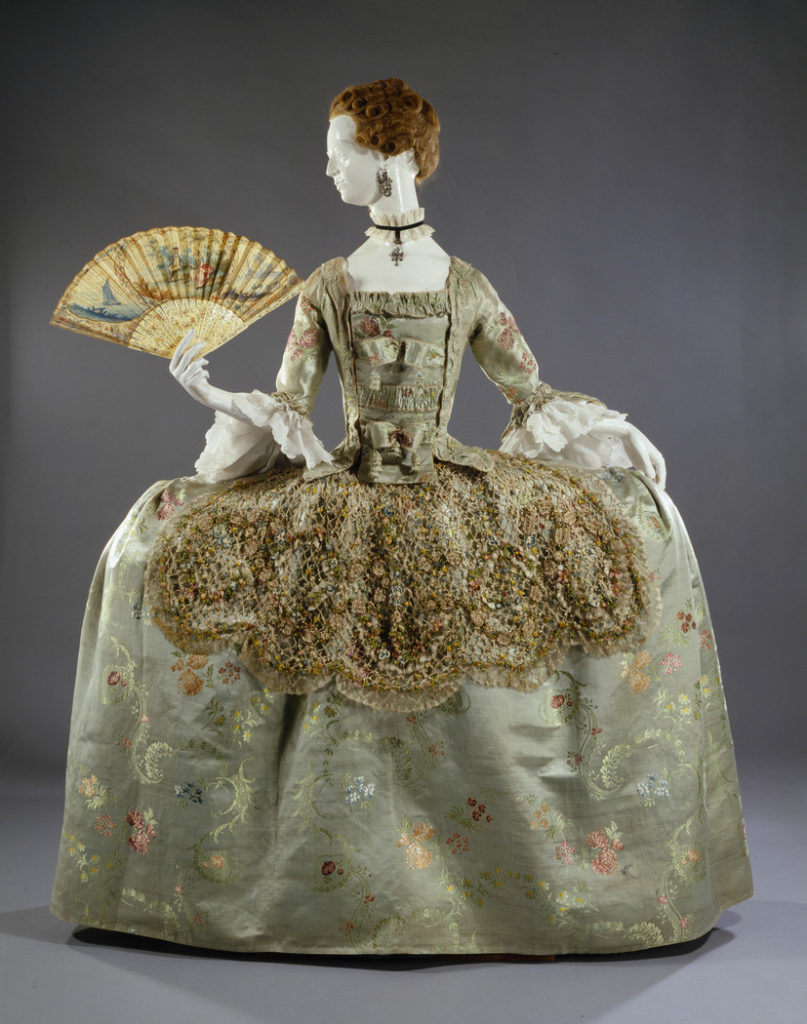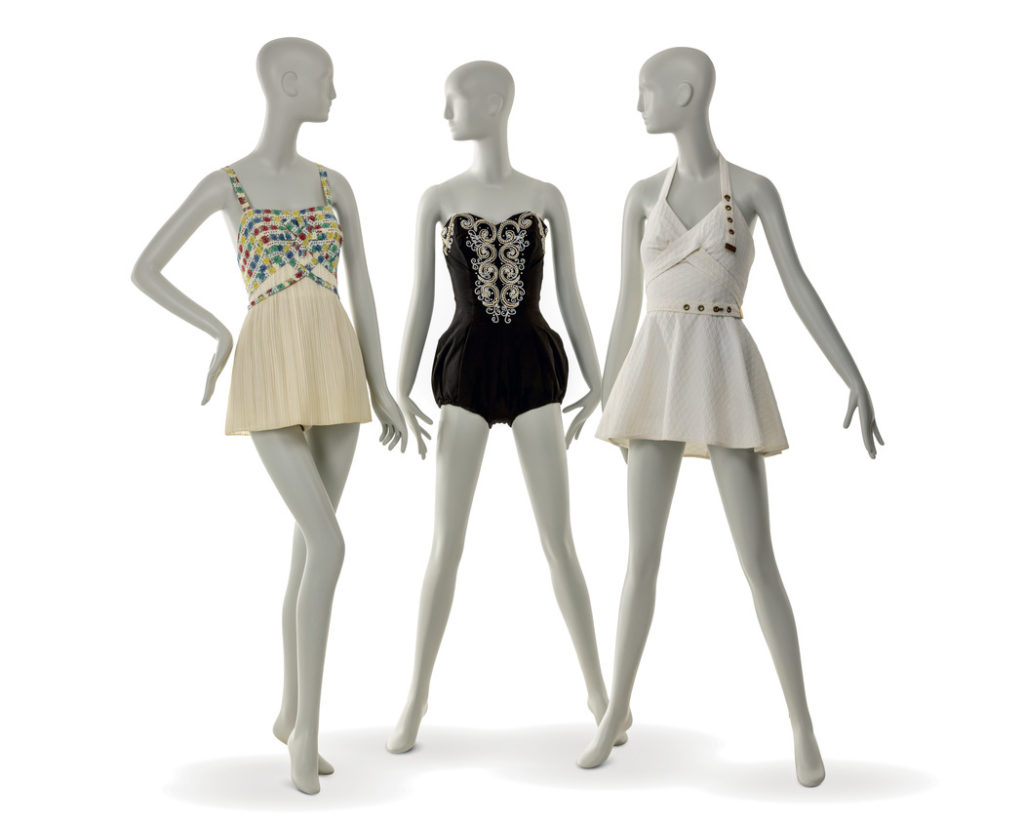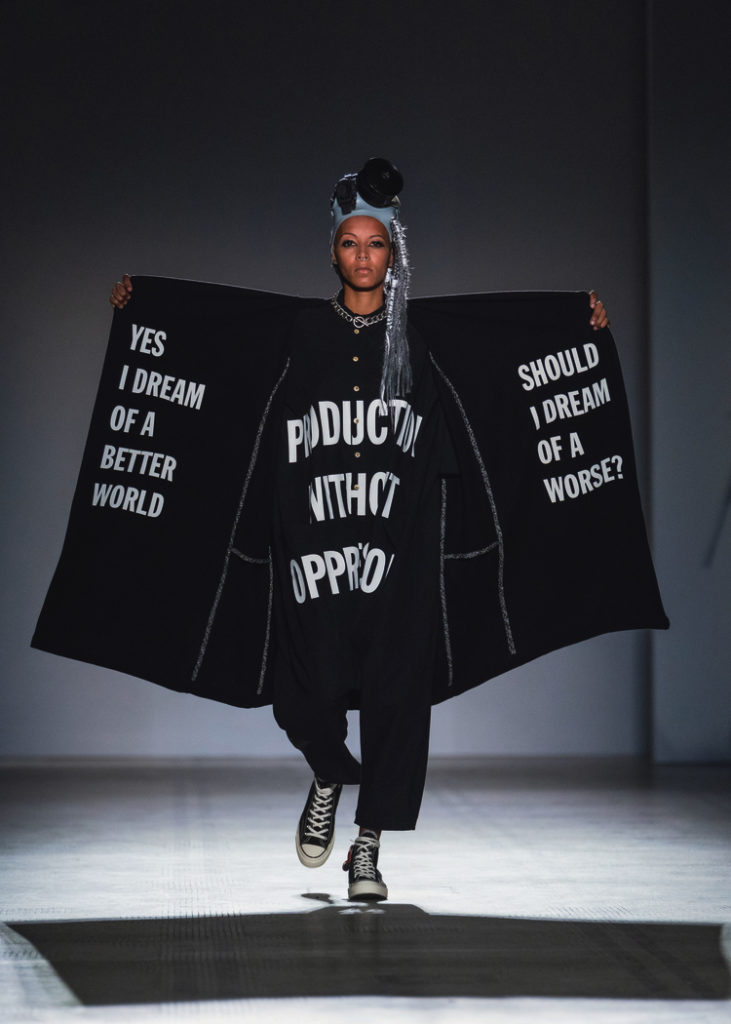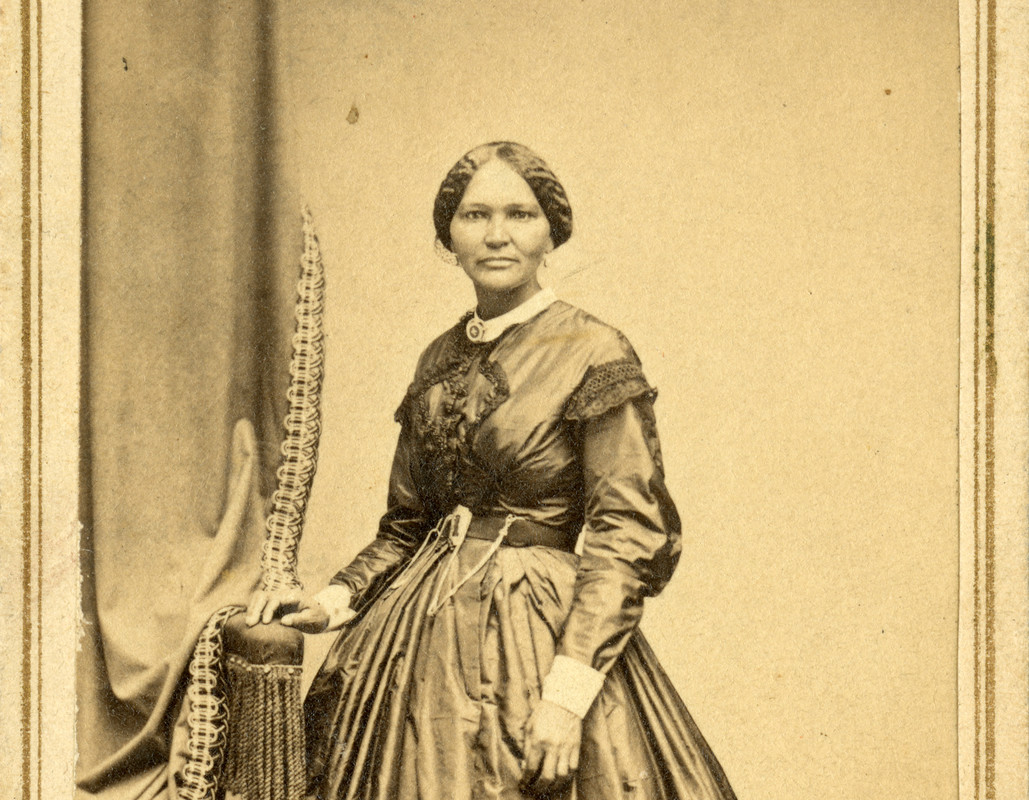Tomorrow, Saturday, November 21, the Peabody Essex Museum in Salem opens a new exhibit, Made It: The Women Who Revolutionized Fashion. The exhibit chronicles two and a half centuries of female designers pushing boundaries, challenging norms, and carving out opportunities.
On view through March 14, the exhibit accounts not just the changing styles of women’s clothing over the decades, but also how those changes went hand in hand with historic events and shifting cultural norms. When the world changes, so do clothes—and sometimes when clothes change, so does the world.
The exhibit also shines a spotlight on oft-overlooked female designers. Their contributions revolutionized the industry in every aspect from silhouettes to representation, blazing the way for the women who would follow them.

Fashion is often written off as frivolous, says exhibit co-curator and PEM curator of fashion and textiles, Petra Slinkard. “But as this exhibition vigorously asserts, fashion represents so much more: from defining cultural moments and advancing political causes, to deeply impacting the global economy and ecology.”
Over 100 articles of clothing, some up to 250 years old, will be on display in Made It, including 28 pieces from PEM’s personal collection. The exhibit is put on in association with the Kunstmuseum Den Haag in the Netherlands, and traveled to Belgium before making its way to the States. Due to COVID, PEM pushed back the exhibit opening from May to November—but it’s now on view through March.
Through mannequins clad in historic garments interspersed with quotes and bits of history about different designers and decades, Made It immerses the viewer in a journey from 18th century America to the present day, with fashion as its medium. Discover the elaborate gowns of the 1800s, the frothy lace of the 1910s, and the loosening silhouettes of the 20thcentury. Learn about the garments that broke down barriers in their day, like swimsuits of the 1950s. You’ll even see a photograph of designer Katharine Hamnett wearing an antiwar protest t-shirt to meet Margaret Thatcher in the ‘80s.

The exhibit opens with the story of Elizebeth Keckley, a woman born into slavery in 1818. After learning to sew and building a reputation as a quality dressmaker, she purchased her freedom in 1855 and opened a dressmaking business in D.C. for the socially elite. She eventually became the personal dressmaker for First Lady Mary Todd Lincoln.
In another section, viewers learn about the flapper style of the 1920s, emerging right after U.S. government ratified the 19th amendment. This year marks the 100th anniversary of that amendment, which granted white women and a small number of women of color the right to vote, but didn’t guarantee it. “Women in the 1920s were aware that they looked different—and they liked it,” says Slinkard. “While this was a short-lived trend, the flapper look, complete with short, swishy dresses, bobbed hair, and bold lips, embodied the ideals of the new modern woman.”
Four of the exhibit’s sections look at the idea of “silhouette as a mirror to women’s history, and also the way in which women moved forward through history,” says Slinkard. “Designers devised revolutionary new styles that affected their world.”

Watch hemlines rise in the 1940s as more women enter the workforce, and fall again as women reentered the domestic sphere in the ‘50s. And the exhibit pays mind to street fashion’s influence on silhouettes and trends. You’ll learn about how designer Mary Quant, often credited with inventing the mini skirt in the 1960s, explains, “It wasn’t me or Courrèges who invented the miniskirt anyway—it was the girls in the street who did it.”
The exhibit ends with work from modern-day designers like Becca McCharen-Tran, who engages topics like gender fluidity, body positivity, and racial justice. Her models, instead of fitting into narrow western beauty standards, reflect the diversity found in the world around us.
PEM has published a catalogue in conjunction with the exhibit, The Women Who Revolutionized Fashion: 250 Years of Design. The gorgeous hardcover catalogue featuring photographs, illustrations, and essays is available at PEM’s gift shop or online and, if you’re looking for ideas, makes a perfect holiday gift.
Made It makes one thing perfectly clear: fashion has power. “[These women] changed the way women dress,” says Slinkard, “which in turn changed how women moved and where women moved.”
Fashion—the way we dress—is at the very core of what makes us human. And it isn’t frivolous; it can change the world.
For more information, visit pem.org.

